Francis Mallmann; Author of Seven Fires
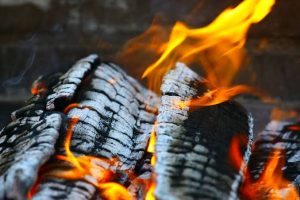
“ Fire has its own language, spoken in the realm of heat, hunger, mystery, and, above all, possibility. It is a slumbering voice inside me. The ever-present beast within my soul. It is beyond words, beyond memory, it comes from a time long before I can recall.” ( Mallmann, 3).
Francis Mallmann was born in Buenos Aires, Argentina. When he was twenty he began managing a restaurant. Then he traveled to Paris and spent two years learning under notable chefs. He then opened his own restaurants first in Argentina then grew into other countries. He won many awards for his elegant style of cooking, however, he returned to his roots and has restaurants dedicated to the Argentine way of cooking.
“ A feeling of resolve came over me. I was through with the fancy sauces and the elaborately arranged ingredients piled high on the plate like one of Marie Antoinette’s coiffures. I wanted to create a cuisine based on my Andean heritage. For inspiration, I turned to the methods of the frontier, of the gauchos, and, before them, the Indians. To put it most simply, I returned to an Argentine cuisine of wood and fire and cast iron. From that day to this, there has always been a fire burning somewhere in my life: in my home, in the kitchens of my restaurants, on the patio, at beach cookouts, at the lakeside campfires. I am drawn to fire and the aroma of things cooking over wood.” (Mallmann, 4)
Mallmann now owns three restaurants which are all located in South American and focus on the authenticity of Argentinan ways of cooking. Throughout his life, he has been awarded three Misilen stars and is known around the world for his methods and skill as a chef and teacher. Mallmann also owns an island where he takes on what to be chefs and trains them in the art of cooking. He uses the same system at his restaurants.
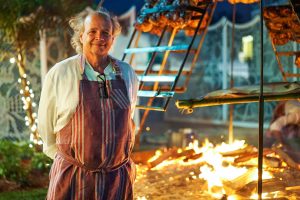
Seven Fires
Seven Fires; grilling the Argentine way by Francis Mallmann and Peter Kaminsky is a cookbook focused on historic Argentinean ways of cooking using open fire as the heat source. The book focuses on the history of Argentinian cooking as well as background information around food and its importance in the culture of Argentina. Mallmann uses simple language and talks to the reader as a friend would. Throughout the book, there are many photos of almost every dish, as well as photos of different methods of cooking. It is very focused on fire in every aspect of cooking. Included are photos of different scenes from Argentina, which focus on the land and how important it is to remember the history and culture of a country and place. The book does not indicate that it is centered toward one gender or another. The pages are white with black and red font, it is a very straightforward book, for a very straightforward chef and cooking style. Seven Fires is very centered around the culture of food in Argentina.
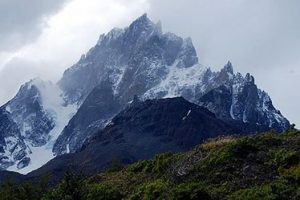
“If I had to pick one food that is most typical of Argentina, it would be the crispy fried or baked turnover known as the empanada. People eat these at the start of big meals or make a filling meal-on-the-go out of them. Many times, on the long road trip to my cabin at “the island” in the most remote part of Patagonia, I have pulled into a little mountain town at midnight- at which time families with small children are still coming in for a big dinner- and ordered up a paper sack of empanadas.” ( Mallmann, 54).
The book focuses on the authenticity of Argentinian food, as well as provides a window into the dramatic side of open-fire cooking. It combines elements of authenticity with food tourism that allows the reader to see the old history and food- culture of Argentina.
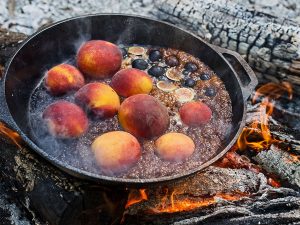
Culture and Identity
Seven Fires was written for those that have a deep love for cooking. It was not written for the faint of heart. The methods are intense and can take up to 30 hours of work for one meal. Every dish is centered around fire and how to use open flames and the natural heat to cook and prepare. Some key ideologies found in the book are Hedonism, Stimulation, Universalism, and Tradition. Mallmann’s passion for cooking is evident on every page. He enjoys his life and loves how he chooses to live. However, his life is not one of ease, every meal in the cookbook centers around open flames which can be at best unpredictable. His respect for flames and all things nature is very evident. There are more pictures of fires and of the Andes than of the food that he has cooked. And lastly, his style of cooking pays homage to the old ways of Argentinian cooking, he respects his ancestors and their methods of preparing food. Mallmann dedicates the book
“ To Patagonia- the land of my childhood, the land that inspired my life.” (Mallmann, 1).
Which demonstrates how central this country and culture are to Seven Firs as well as how Francis lives his life.
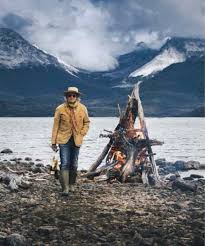
Methods found in Seven Fires
In the cookbook, Mallmann defines five different methods of cooking that come up throughout the book. All are clearly defined, with dimensions and instructions that go along with photos of what he is describing. However, the things one needs in order to execute these methods are difficult to come by. Most involve large sheets of cast iron, which is expensive, as well as difficult to find. For example, there is one method, Coldero, which is a massive, cast-iron, cauldron resting in the coals of a fire. In the photo, the cauldron is four feet by 3 feet of pure cast iron. He does, however, provide alternatives, such as a cast iron dutch oven or something similar. It seems like he is demonstrating the authentic ways of argentine grilling, but also being realistic about the limitations of the average person. The majority of the recipes are simple and do not require a whole lot of background information. However, there are terms such as mincing and chopping that are taken for granted as prior knowledge. The ingredients vary on availability. Most are easy to come by, most of the seasoning is salt and pepper and common household herbs. However, there are some receipts that ask for whole lambs or pigs that are to be roasted in a giant iron rod. The animals are hooked onto the rod and placed near a fire so that it cooks slowly throughout the day. There is a receipt here that asks for a 1400 pound cow, a heavy-duty-and-tackle attached to a steel stanchion set in concrete, along with a two-sided truss made of heavy-duty steel and a 9-foot square sheet of corrugated metal. Not only is the method extremely obscure and not within most people’s abilities, but the entire process of preparing this cow is nine-teen hours.
“1 medium cow, about 1400 pounds, butterflied, skin removed. 2 gallons Salmuera ( 2 cups salt, 8 quarts water, boiled to dissolve; see headnote, page 57). 2 gallons Chimichurri ( page 252)” (Mallmann, 104) .
But other than some rare cases, most of the methods of cooking are simple and the ingredients are easy to find.
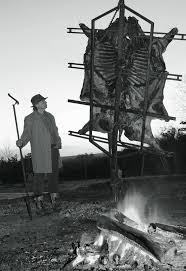
Connections To Class
GASTRONOMY;
Seven Fires: grilling the Argentine way focuses on the gastronomy of Argentina. Mallmann highlights the history and culture that went into cooking and preparing food inspired by the cooking styles of Argentina and specifically the people that come from the Andes mountains.
“The gauchos developed the open fires of the Argentine barbecue or parrilla , the source and inspiration of so many of the recipes in this book. When we gather at a cookout, the fine points of grilling are discussed as heatedly, and with as many differing opinions, as soccer, golf, or polo, all of which are national obsessions.” (Mallmann, 9).
FOODWAYS;
As stated above, Seven Fires… focus on the traditional values and customs passed down from the ancient civilization of Argentina to Francis Mallmann and the methods that have influenced the food culture of this area for generations. By painting these values and traditions, the methods of preparing food in this manner have remained alive.
“If you have ever put a hot potato in the embers and covered it with ashes, you already know the rescoldo method. Before the arrival of the Spaniards, this style of cooking was favored by the Ona Indians, who still live in the far south of Patagonia and on the tierra del Fuego.”(Mullmann, 22).
IDENTITY;
Similarly, Seven Fires touches on the themes of identity. Throughout the cookbook, Mullmann constantly refers to how cooking with fire is a way of life for him and the readers that he is trying to connect with. To Francis Mullmann, fire is not only a means of heating or cooking but as a passionate love that shapes his life every day. Fire defines his life and has given him a means to express himself and his identity.
“ Fire has its own language, spoken in the realm of heat, hunger, mystery, and, above all, possibility. It is a slumbering voice inside me. The ever-present beast within my soul. It is beyond words, beyond memory, it comes from a time long before I can recall.” (Mallmann, 3).
Citations
Coggins, D. (2013, October 7). ACL Appreciation: Francis Mallmann. A Continuous Lean. https://www.acontinuouslean.com/2013/10/07/acl-appreciation-francis-mallmann/.
Compton, N. B. (2018, June 6). How to Throw a Backyard Barbecue Like Francis Mallmann. GQ. https://www.gq.com/story/francis-mallmann-grilling-tips.
JoebevoJoebevo 2, John RennieJohn Rennie 313k9797 gold badges650650 silver badges914914 bronze badges, Luboš MotlLuboš Motl 168k1414 gold badges361361 silver badges571571 bronze badges, Cinaed SimsonCinaed Simson 47333 silver badges99 bronze badges, Mark RovettaMark Rovetta 3, & TheDoctorTheDoctor 1201313 bronze badges. (1961, July 1). Physics of a burning log of firewood. Physics Stack Exchange. https://physics.stackexchange.com/questions/39396/physics-of-a-burning-log-of-firewood.
Mallmann, F., & Kaminsky, P. (2009). Seven fires: grilling the Argentine way. Artisan.
Post, L. (2020, February 14). Legendary Filmmaker Says the Andes Mountains Holds Chile’s Turbulent Memories. Latin Post – Latin news, immigration, politics, culture. https://www.latinpost.com/articles/143588/20200214/a-legendary-filmmaker-says-the-andes-mountains-holds-chiles-turbulent-memories.htm.
Sachs, A., & Freelancer. (2014, September 23). Open-Fire Dinner Party Recipes from Francis Mallmann: Tasting Ta. Tasting Table. https://www.tastingtable.com/cook/national/Open-Fire-Dinner-Party-Recipes-from-Francis-Mallmann.
Taylor, D. (2018, May 8). The Gaucho Chef: Interview with Francis Mallmann. David RS Taylor. https://www.davidrstaylor.com/home/2018/3/31/the-gaucho-chef-interview-with-francis-mallmann.